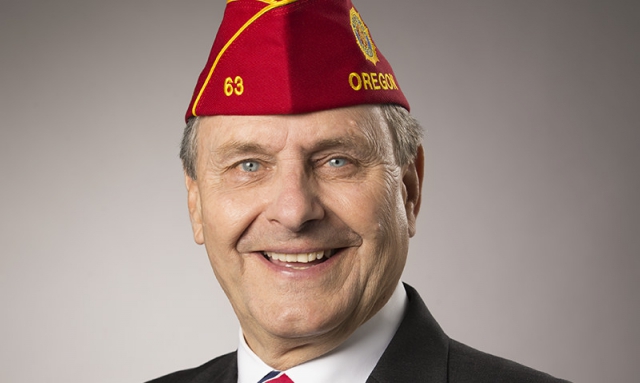
‘Cleanup’ vets still paying a price
“Invisible bullets entered our bodies, and we carry them with us daily,” Paul Laird, a three-time cancer survivor from Otisfield, Maine, told The American Legion Magazine in an interview last year. Laird is an Army veteran of a mission to clean up atomic waste on Enewetak Atoll in the late 1970s.
Because they did not serve at the site during actual nuclear testing in the 1940s and 1950s, Laird and about 6,000 other servicemembers who participated in the subsequent cleanup are ineligible to claim VA benefits for any suspicious illnesses that could be connected to that service. Considering that plutonium has a half-life of 24,000 years, it isn’t unreasonable to assume that the area remained dangerous two decades after the Pacific island chain was blasted with the equivalent of 2,120 Hiroshima-sized explosions.
Delegates to last year’s American Legion national convention in Cincinnati unanimously passed Res. 130, which calls for legislation to eliminate the radiation dose estimate requirement in claims for veterans exposed to ionizing radiation during their service. Thousands of photographs, video footage and firsthand accounts reveal that most Enewetak cleanup veterans did not wear protective gear during the often arduous labor under the tropical sun. An element commander admitted there weren’t enough protective suits to go around. Many other vets say they simply did not understand the risk and that dosimetry film badges were of no use. In 2015, U.S. Rep. Mark Takai, D-Hawaii, estimated the cancer rate among this group was about 35 percent.
Takai championed legislation to address their health-care needs. An Iraq veteran of the Hawaii National Guard, Takai died from pancreatic cancer last year. But Congress has taken up his measure again. The Mark Takai Atomic Veterans Healthcare Parity Act, H.R. 632 and S. 283, would provide for treatment and service-connection presumption of certain disabilities for Enewetak cleanup veterans. Sponsored by Sen. Al Franken, D-Minn., and Rep. Grace Meng, D-N.Y., the bill had seven co-sponsors in the Senate and 85 in the House at presstime.
Meanwhile, Laird keeps battling ailment after ailment. “No one in VA wants to hear the word ‘radiation,’” he says. “I have cysts on my retina, and when I asked if they could be caused by radiation, the response was, ‘I know what you want me to say, but I just can’t say it.’”
Surviving Enewetak cleanup veterans range in age from their late 50s to early 70s. Not all are sick, but hundreds are active on the group’s Facebook page. The camaraderie and compassion shared by these veterans is not unlike what The American Legion’s founders envisioned when they pledged to “sanctify our comradeship by our devotion to mutual helpfulness.”
“While this legislation may not benefit me personally, we have quite a few brothers who have illnesses and cancers that will be covered,” says Gary Pulis, an Enewetak cleanup veteran living in Auburn, Ind. “I don’t want to see another brother’s family lose everything trying to treat an illness or cancer that should be service-connected.”
Neither do we, Gary.
